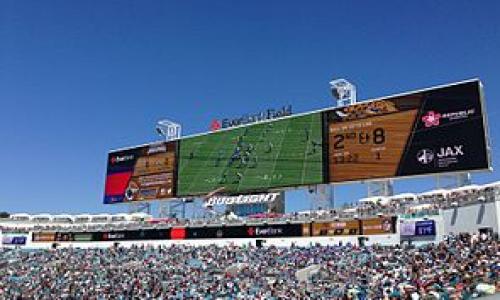Meteorologically, spring begins on March 1. If we can expect a thaw in the weather, the same can't be said for bank rates which continue their inexorable decline. Average one-year CD Rates dipped from 0.387% to 0.385% APY. Three year average CD rates dropped from 0.765% to .762% APY. Five year average CDs dropped to from 1.115% to 1.113% APY. Online savings rate averages remained steady at 0.712% APY after having dipped the past two weeks. About the the best that can be said, is that the rate drops were relatively minor.
Unlike the averages, most of the top rates remained steady over the past week.
- Online Savings: AmTrust Direct retained the top spot at 1.05% APY.
- 1 Year CD: Five banks retain the top spot at 1.05% APY.
- 3 Year CD: CIT Bank at 1.44% APY
- 5 Year CD: CIT Bank at 1.85% APY and Barclays Bank Delaware at 1.85% APY.
- Rewards Checking: Hope Credit Union cut its rewards checking rate from 3.51% to 3.01% APY for balances up to $10,000. It is now tied with Money One Federal Credit Union for the best rewards checking rates. Both credit unions are open to members from across the country.
Local banks and credit unions often offer better rates (especially for CDs) than online banks so be sure to check them out. For example in Massachusetts, Belmont Savings Bank is offering a 1.15% APY savings account and First NBC Bank is offering a 2.27% APY 5 year CD (with a $100,000 minimum deposit). View local CD rates in your area.
The chart below shows the trend in average rates since October 2012.

The difference in the rate of decline between online savings and CD rates can be viewed on the chart below, which shows the spread between online savings account rates and 12 month CDs. The spread still remains very elevated although it has come down in recent weeks as several online banks have cut rates. On average, online savings account rates pay .327 percentage points more than 1 year CDs, up from .23 percentage points more at the beginning of last year but down from the spread's high of .344 percentage points in late January.

General rate environment
Last week, the government released its January consumer spending and income numbers. The good news, consumer spending increased by 0.2 precent in January after a 0.1 percent gain in December. Not exactly stellar but at least there were gains. Incomes though, dropped by the most in 20 years, slumping 3.6 percent. The culprit seems to be the 2 perctange point increase in the payroll tax which went into effect in January.
There's nothing really new in this information. It provides another data point supporting my outlook that the economy will continue to limp along until some event catalyzes a change, either for the better or worse. As a result, deposit rates will continue to trend down. Mortgage rates will remain low but will rise off their bottoms due to increased GSE fees and increased regulation.
My outlook: Savings rates will continue to drift lower for the next 10-16 months before beginning to move higher. How high and how fast they move will depend on the government's ability to stop bickering and resolve their budget and borrowing disputes, the continuation of a recent economic uptick, technological advances, and the ability of Europe to put its woes behind it and resolve its fiscal problems.
Q4 Bank Data - Banks and Credit Unions Are Making Money
Both the FDIC and the NCUA (insurance body for credit unions) announced the results of their member banks last week and the data shows the banking sector continuing to recover from the shocks of 2008.
Commercial banks and savings institutions insured by the Federal Deposit Insurance Corporation (FDIC) reported aggregate net income of $34.7 billion in the fourth quarter of 2012, a $9.3 billion (36.9 percent) improvement from the $25.3 billion in profits the industry reported in the fourth quarter of 2011. This is the 14th quarter in a row that earnings have registered a year-over-year increase. Increased noninterest income and lower provisions for loan losses continued to account for most of the year-over-year improvement in earnings. For the full year, industry earnings totaled $141.3 billion — a 19.3 percent improvement over 2011 and the second-highest ever reported by the industry after the $145.2 billion earned in 2006.
"The improving trend that began more than three years ago gained further ground in the fourth quarter," said FDIC Chairman Martin J. Gruenberg. "Balances of troubled loans declined, earnings rose from a year ago, and more institutions of all sizes showed improved performance."
Credit unions also had a good quarter. Credit Unions' earnings hit an all-time high. “Credit unions had a pivotal year in 2012,” NCUA Board Chairman Debbie Matz said. “The industry generated record earnings; assets crossed the $1 trillion mark; and membership grew by more than 2 million. The industry net worth ratio rose to 10.44 percent, and delinquencies fell again. Credit union lending also grew by 4.6 percent, meaning more people got the loans needed to buy homes, purchase cars, and go to school.
The Texas Ratio, a metric BestCashCow uses to assess the health of banking and credit union industry fell for the 12th straight quarter. For banks, the average Texas Ratio is now 17.60% while for credit unions it is 7.39%. For individual institutions, a Texas Ratio over 100% is a cause for concern about its safety and soundness.
This is all pretty significant. Five years after the financial crisis, the banking industry is back on top, earning almost as much as its heyday in 2006, before the bottom fell out of the mortgage market. Credit unions have never had it so good. Bottom line: the Fed has successfully reinflated the banking sector with low interest rates. The banking industry is now much better capitalized than in 2008, has plenty of deposits (some banks have excess deposits), and is profitable. None of this means you'l earn a higher return on your CD anytime soon, but eventually, the capital and deposits will be deployed and faster growth will occur.
All Bank and Credit Union Financial Data Updated
BestCashCow had updated all bank and credit union financial data to reflect the recently released 2012 numbers. If you haven't seen this information, the site provides a snapshot of key metrics for every bank and credit union in the United States. Here's the financial snapshot for Century Bank & Trust Company.
Savings Accounts or CDs?
The data continues to show that opening a savings account is a better bet than a 1-3 year term CD and I expect this to hold through 2013. Online savings accounts have held the line over the past year while CD rates continue to fall. As the chart shows, the premium for opening a longer-term CD has eroded significantly and continuously over the past year. While the premium for opening a 5 year CD over a 1 year CD was 1 percentage point in October 2011, it now stands at .728 percentage points.
So for now, here are my recommendations on which deposit accounts to open::
For money you want to keep liquid, go with online savings accounts. They offer better rates than 1-3 year CDs and athough several banks have dropped rates in the past week, they have still offered decent rate stability over the past year.
If you want to take advantage of the higher rates on longer-term CDs, look to open them at local community banks. BestCashCow research has shown that community banks and credit unions offer the most competitive rates on longer-maturity CDs. Otherwise, you'd be better off keeping your money liquid in an online savings account.
I believe this is the best and easiest strategy for keeping your cash liquid and maximizing your savings over the next year.

Make the best of a tough savings situation in 2013
Yields may be low in 2013 but a savvy saver can boost the return with no increase in rate by rate shopping. By shopping around, a saver can earn an extra half to full percentage point. On $100,000, that's $1,000 in extra cash per year. Remember, even in today's environment, there is competition for your cash.













Comments
GrandpaYella
March 05, 2013
Thanks for the update Sol. Good to see banks getting healthier but it's done on the backs of the retirees and older people. The Fed has driven rates down and taken from those that are on fixed incomes to shore up bank balance sheets. It might be good economic policy but it has a social cost.
I live on a fixed income and it has been reduced sharply over the past four years. I'm less optimistic about rates going up anytime soon.
Is this review helpful? Yes:1 / No: 0
Marketwitch
March 05, 2013
Dow hit a new high today, erasing all losses from the global financial crisis. Of course, we all know this is because the world's central banks are pumping up the market, just as they did with real estate back in 2002. One trader called this a new bull market but I call it a new bubble.
You are looking for a catalyst for rising rates. This could be it, or it could be the calm before the real storm. How is the Fed going to raise rates when doing so will prick the equities bubble?
Tough decisions.
Is this review helpful? Yes:4 / No: 0
Gb67
March 06, 2013
Rates are pegged to unemployment numbers and those won't change. It's the Wall Street vs. main Street issue. Rates are staying low for a looooong time.
Is this review helpful? Yes:0 / No: 0
Ichabod
March 06, 2013
Interest rates will not rise for another 5-6 years, at least. Look at Japan. 0% interest going on 30 years. The Western world is in a cyclical downturn due to demographics. Is it a coincidence that equity and bond markets have peaked right around the time the baby boomers started retiring? I think now.
Is this review helpful? Yes:1 / No: 0
Sol
March 08, 2013
The unemployment rate dips to 7.7%. Just 1.2 percentage points more before the Fed thinks about raising rates. At least we're headed in the right direction.
Is this review helpful? Yes:1 / No: 0
Add your Comment
or use your BestCashCow account